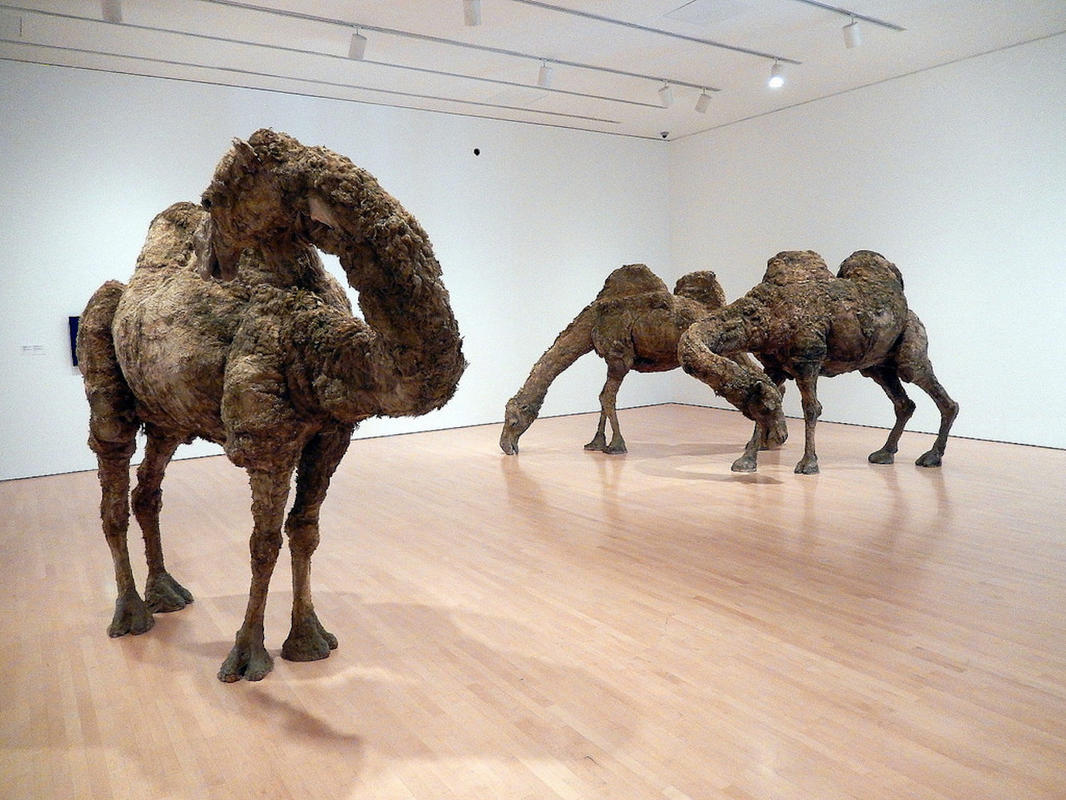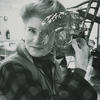More about Camel VI, VII, VIII

Contributor
Nancy Graves’ Camel VI, Camel VII, and Camel VIII sport an ugly-cuteness the likes of which this world has never seen.
The last thing you would expect to see in a museum is a small herd of camels, which is why Nancy Graves is a genius. But why camels, you ask? “Because camels shouldn't exist. They have flesh on their hoofs, four stomachs, a dislocated jaw. Yet with all of the illogical form the camel still functions. And though they may be amusing, they are still wonderful to watch.”
She gave other animals a fair amount of thought before making her decision, but no animal could stand up to the quiet magnificence of the camel. “The horse was too familiar, she just didn’t think a moose was that elegant, and an elephant wasn’t very interesting as a form either. But she thought that the camel was bizarre enough and unknown enough… that people would really stop and take a second look at a camel.” And they did. These camels, made from 1968-1969, earned Graves the recognition she deserved as a sculptor. She got a solo show at the Whitney at the age of 29 (the youngest person and fifth woman to do so) and was afterwards featured on the cover of Artforum. She was so beloved as a sculptor that people hated her painting for no other reason than it wasn’t her sculpture. The New York Times said her “paintings [were] big disappointments and an embarrassment to the sculptural talent of Miss Graves.” A little dramatic if you ask me.
Graves made her camels while living in Florence. The idea came to her as the lovechild of two influences: the wax models of Clemente Susini, a seventeenth century anatomist, and her father’s job at the Berkshire Museum, which displayed art and natural science together. They are made of wood, steel, burlap, polyurethane, animal skin, wax, and oil paint. No camel was harmed in the making of this art, though they are wildly life-like. And if you’re thinking that camels were the wrong choice, I’ll have you know that the Arabic word for camel literally translates to beauty.
Sources
- Guiducci, Mark. "It’S Time To Rediscover Nancy Graves: Post-Minimalist, Anti-Pop Lover Of Camels." Vogue. N.p., 2015. Web. 8 Jan. 2018.
- Hunter, Christina. Nancy Graves Unveiled At Mitchell Innes & Nash. Blouinartinfo.com, 2015. video.
- "Nancy Graves: From Camels To Moonscapes." Gallery.ca. N.p., 2017. Web. 8 Jan. 2018.
- Robinson, Lizzie. "30 Most Incredible Facts About Camels | The Fact Site." The Fact Site. Web. 8 Jan. 2018.
- Shirey, David. "Display By Nancy Graves Adds Vitality To Art Series." Nytimes.com. N.p., 1971. Web. 8 Jan. 2018.












It's honestly so crazy how lifelike this artist was able to create these camels. they are in motion and look like the real thing they're just not in the sand. If they were placed in their climate I honestly wouldn't have even noticed they were fake.